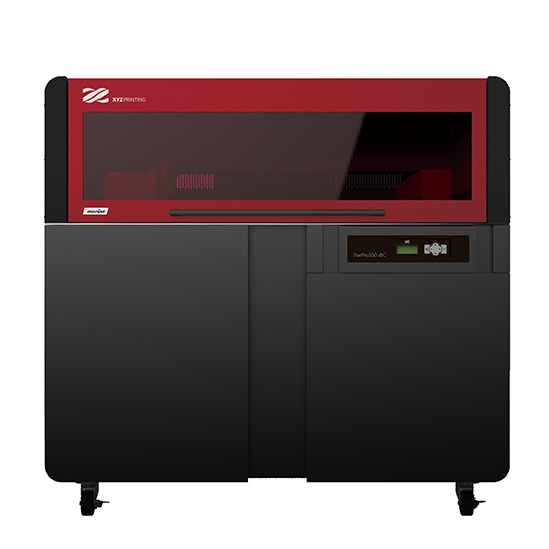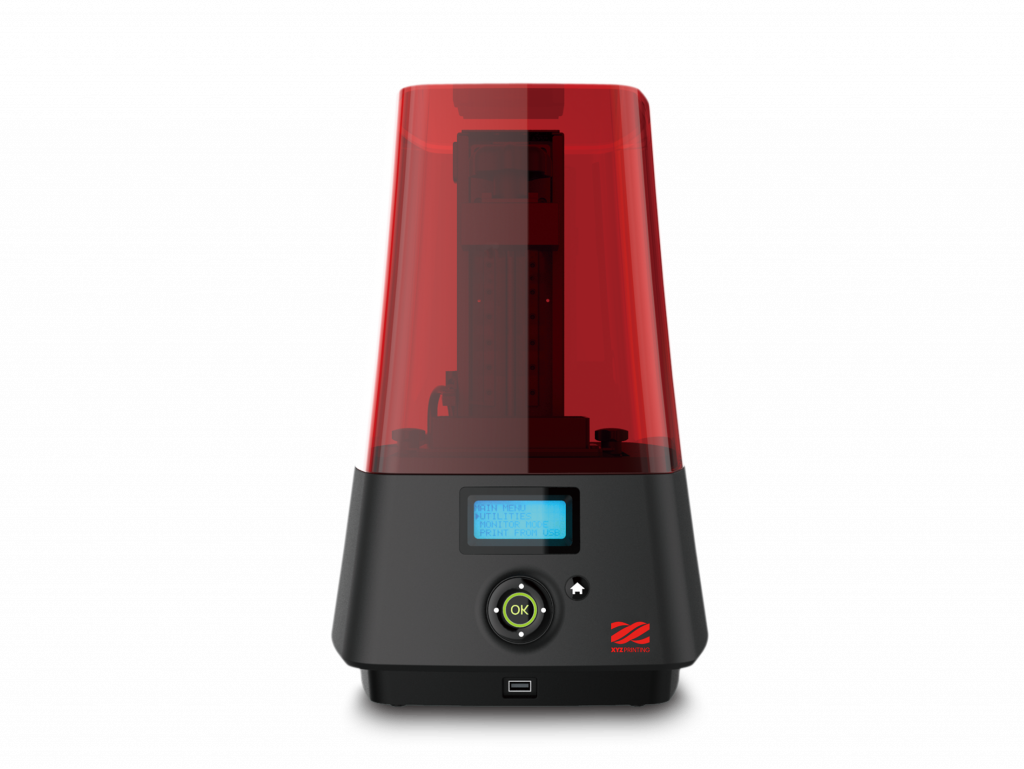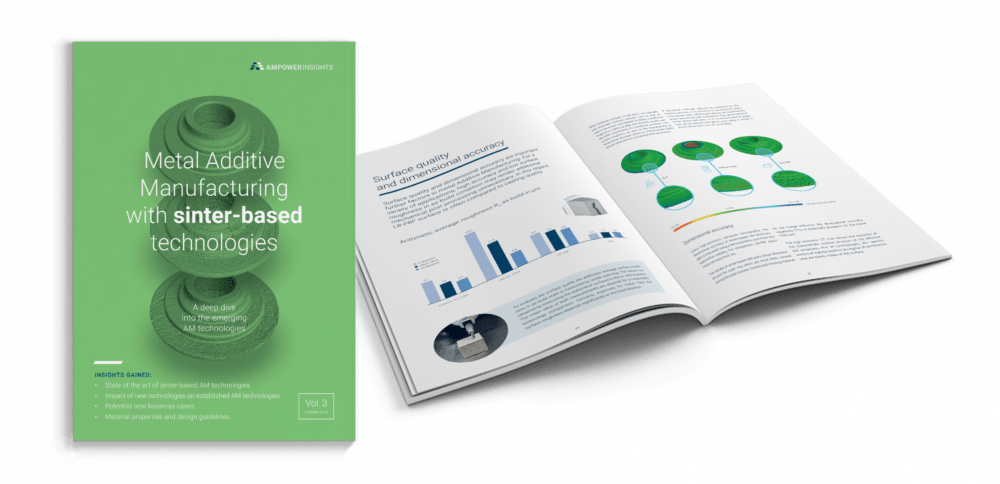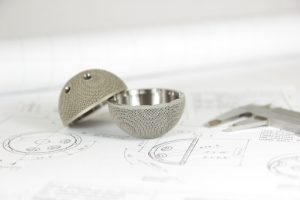They told us we’d all have 3D printers on every desktop. The newspapers, the TV, all the tech blogs. All those that are now complaining that we don’t have 3D printers on every desktop. One of the companies that tried the hardest to make a 3D printer on every desktop actually happen is XYZPrinting. The company is probably the largest single manufacturer of 3D printers worldwide and ships the most systems. XYZPrinting focused on big box stores and low-cost printers. Initially, their systems seemed rather crude but amazed us all at their low price points. Bit by bit XYZ’s systems started to evolve and become feature rich much more capable systems selling in the $200 to $500 range. The firm, which is a subsidiary of a gigantic company called New Kinpo, sold tens of thousands of these printers globally (maybe around 40,000 a year). It has now told 3DPrint.com that it is to focus on the manufacturing industry and industrial printers.
The market and the margins are to be found in more automated and expensive systems. XYZ Printing already has higher priced systems on the market such as its SLA printers and some semi-industrial units. The company must have concluded that the Clone Wars were seeing so much bloodletting that the bottom end of the market was becoming a bit of a challenging place to do business. Printrbot went bankrupt after selling tens of thousands of units as well at that price point. Anet and Creality were busy demolishing themselves while hyper-aggressive marketing tactics were deployed. Influencer marketing lead to many a questionable review while hundreds of more firms started to offer i3 clones. Some are finding success in the space through volume and sheer gumption. But the past 24 months have been slaughter on the desktop really.
I for one think that XYZPrinting should really stick with their desktop systems and offer $750 or so price point capable desktop 3D printers which are easy to use and have carbon and HEPA filters. I’m contrarian and would urge them to offer more now and push hard today. A bit more resolution and this kind of printer will be the choice for schools and offices going forward. Things will pick up. A friend asked me a few days ago to recommend a cheap printer that was good and I couldn’t really. A year or two so ago I would have been able to suggest three models. It seems however that the invisible hand has convinced XYZPrinting to move upmarket to high growth and high margin industrial territory. The $1000 desktop segment is completely dominated by Prusa Originals and Flashforge. Above this segment, we’re seeing increased competition by Ultimaker S5 systems, Raise3D, and other similar systems around $5000. It will be a challenge for the company to compete in this segment. This is especially true since high-temperature systems of $20,000 or so are increasing in capabilities all the time and are doing well, capping the segment above that.
So XYZ’s efforts are certainly ambitious. The firm does have deep pockets, however: a committed CEO and a lot of engineering resources. One of their industrial systems is the PartPro 350, which is a binder jetting printer. With a build volume of 222 x 350 x 200 mm and full-color capabilities this is a high spec system up against 3D Systems, Stratasys and Mimaki. The MfgPro230 xS is a powder bed fusion system that hopes to take the fight to smaller systems such as Sinterit and emerging firms such as Farsoon and full-blown industrial solutions such as EOS. With Material Extrusion, Powder Bed Fusion, Binder Jetting, and Vat Polymerization (both DLP and SLA!) under one roof, the company may at this point be the only firm that sells all of these technologies (do let me know if that’s not true!). Tantalizingly this could make them a one-stop shop for customers and resellers. At the same time support and engaging business customers is a new game for the firm. We asked XYZPrinting’s Managing Director for EMEA Fernando Hernandez what the move means for the firm and customers.
Will you still sell printers for schools?
We will continue to sell printers for schools. We have created several education materials and dedicated software. Our products have helped us to build a big market share in the educational sector and we will be continuing to support our customers. The US is, at the moment, the most successful and advanced education market for us, and a region we will continue to service and develop printers for as well as EMEA and Asia. We are passionate about helping children develop STEAM skills.
Will you still support previous printers?
Of course! We will continue to support those customers with previous printers from our desktop range with software updates and added features, like new materials and new printing modes. We will also be releasing three new desktop printers in 2019 alongside our new range of industrial printers.
Will you develop new low-cost printers?
Although XYZprinting is scaling up, we always aim to manufacture the most cost-effective solutions without sacrificing on quality, speed or performance. In fact, our new range of industrial printers offer the best value for money in the market, boosting the penetration in the AM market for SMEs as they will be able to access advanced printing technology such as SLS for a fraction of the cost of other brands.

The PartPro350
What kinds of features will the new printers have?
XYZprinting is bringing a whole series of 3D printing solutions, each with unique features and specs. Some of the most exciting features are making our new machines more efficient. For example, our PartPro350xBC is 150% faster than other colour binder technologies and the MfgPro230 xS has a CO2 laser with a high printing volume (230mm3) and a high printing speed of up to 20mm per hour.
The shorter cooling and breakout times also means that prints are made faster but with the same precision tolerances. Features like these make this the leading range of industrial printers on the market at the moment, and with new products due to be released later this year, we are very excited to continue that.
The new printers include:
PartPro300 xT
The PartPro300 xT is the most advanced FDM printer in the brand portfolio. The heated chamber ensures a constant temperature, offering excellent performance for complex geometrics and advanced materials. It can print with multiple material types including ABS, PLA, Tough PLA, PETG, Nylon, Water-soluble PLA, Carbon Fibre and Metallic PLA. Its dual extrusion module allows the use of two different colours or materials to create more diverse product designs and strength the physical 3D models by combining two materials in one single print.
PartPro350 xBC
The PartPro350 xBC offers cutting edge printhead technology that delivers industry-leading colour part production. With speeds up to 18mm per hour for a fully loaded build volume, the PartPro350 xBC is 150% faster than other colour binder technologies. The printer offers full-colour printing in one process by integrating all steps and curing, colouring and 3D stacking at once, with CMY three-colour ink and transparent binders.
MfgPro230 xS
The MfgPro230 xS is one of largest SLS printer in market with a print volume of 230x230x230mm.
It allows you to create prints with no support material due to its SLS technology, resulting in less material being used and fewer breakages due to the isotropic mechanical properties of the technology, ensuring every print job counts. The printer can print up to one litre per hour making it one of the fastest printers on the market.
PartPro100 xP
The PartPro100 xP is a high-resolution DLP printer for those small parts where accuracy and details are critical. It uses professional grade plastic resin and features the tough surface quality that is perfect for prototyping small parts. It is the most affordable high-resolution 3D printer based on DLP technology.
EeezCure/MultiCure180
Both the Eeezcure180 and MultiCure180 are designed to optimise the mechanical properties of resin-printed models, improving the strength and performance of printed parts. The LEDs embedded in to the MultiCure180 have a wider range of UV wavelengths meaning that it is able to cure a wider range of resin materials with increased efficiency.

The Castpro 100
What 3D printing processes do you offer?
We have a range of printing processes that we can offer users with the new industrial printers. We have Fused Filament Fabrication (FFF) technology printers, full-colour bender jetting printers, and DLP, SLA and SLS technology printers, meaning that we can cater to all customer needs.
We also have a range of supporting devices such as our EeezClean family of depowering stations for powder base printers, or our range of UV post-curing solutions in the form of the EeezCure180 and the MultiCure180 which have LED diodes with a wide range of UV wavelengths to be able to cure a wider range of resins with increased efficiency.
What materials?
The FDM range of printers will support the following materials; ABS, PLA, Tough PLA, PETG, Nylon, Water-soluble, Carbon Fibre and Metallic PLA. We want to offer our clients a complete range of materials to help them to create parts and prototypes exactly how they want them. Many of these materials are made in house to ensure they are perfect for our printers and we work closely with external suppliers of other materials to make sure that they perform as well as possible when printed.
Our SLS solution can print with Nylon powder PA12 and preparing the release of our TPU. We have a wide range of resins for our DLA/SLA printers, such as castable resin, tough resin, high temperature resin and, of course, a range of general-purpose resins. For Binder Jetting we have an excellent collaboration with Memjet which offers an excellent quality on binder and colourful ink.
What will differentiate them?
Our new industrial printer range will be market leaders, both in terms of quality, speed and price. The PartPro350 xBC, for example, is 150% faster than other colour binder technology printers and the MfgPro230 xS has a higher printing speed than other similar industrial printers printing at 20mm per hour at a very decent building volume. The price for those devices are a fraction of the closest competitors, but also have higher specs.
3D printers have historically been very expensive too, and this has been a barrier to entry for many manufacturers. The printers we have developed as part of the industrial range have been developed to be cost efficient as well as time efficient whilst making sure the final print is of a high quality.

The MfgPro230 xc Powder Bed Fusion system for 56,000 euros.
Why are you making this decision?
It is a natural move for us. We have a very strong company and the R&D team have a lot to say on Industrial AM. XYZprinting has seen a growing demand among our customers for more industrial printers, and an increased market opportunity in this area generally. By expanding our range, we can ensure our printers cater for every business, from individual entrepreneurs looking for an easy and affordable way to print prototypes to automotive manufacturers looking to make high-specification parts for their vehicles.
What is XYZ’s goal in 3D printing?
We want to disrupt the market in industrial 3D printers as we did in the desktop market. We want to democratise AM to make it more accessible for SMEs.
Why should customers choose you?
There are several reasons, but I think we offer the best balance in the market in terms of quality, specifications and price. We offer the widest range of devices, not only printers but also supporting hardware and materials. Customers can find a one stop shop in XYZprinting for all their 3D printing needs. We are growing by the day and expanding our user experience with free software upgrades and improvements and releasing accessories to prolong device lifetime.
What kind of price points do you operate at?
|
Product
|
Category
|
Manufacturer’s suggested retail price (MSRP) (EXCL VAT)
|
|
PartPro 350 xBC
|
3DP
|
€28490
|
|
MfgPro230 xS
|
SLS
|
€56990
|
|
PartPro100 xP
|
DLP
|
€2690
|
|
PartPro 300 xT
|
FFF
|
€4999
|
The post XYZPrinting to Focus on Industrial 3D Printing: Interview with Fernando Hernandez appeared first on 3DPrint.com | The Voice of 3D Printing / Additive Manufacturing.









